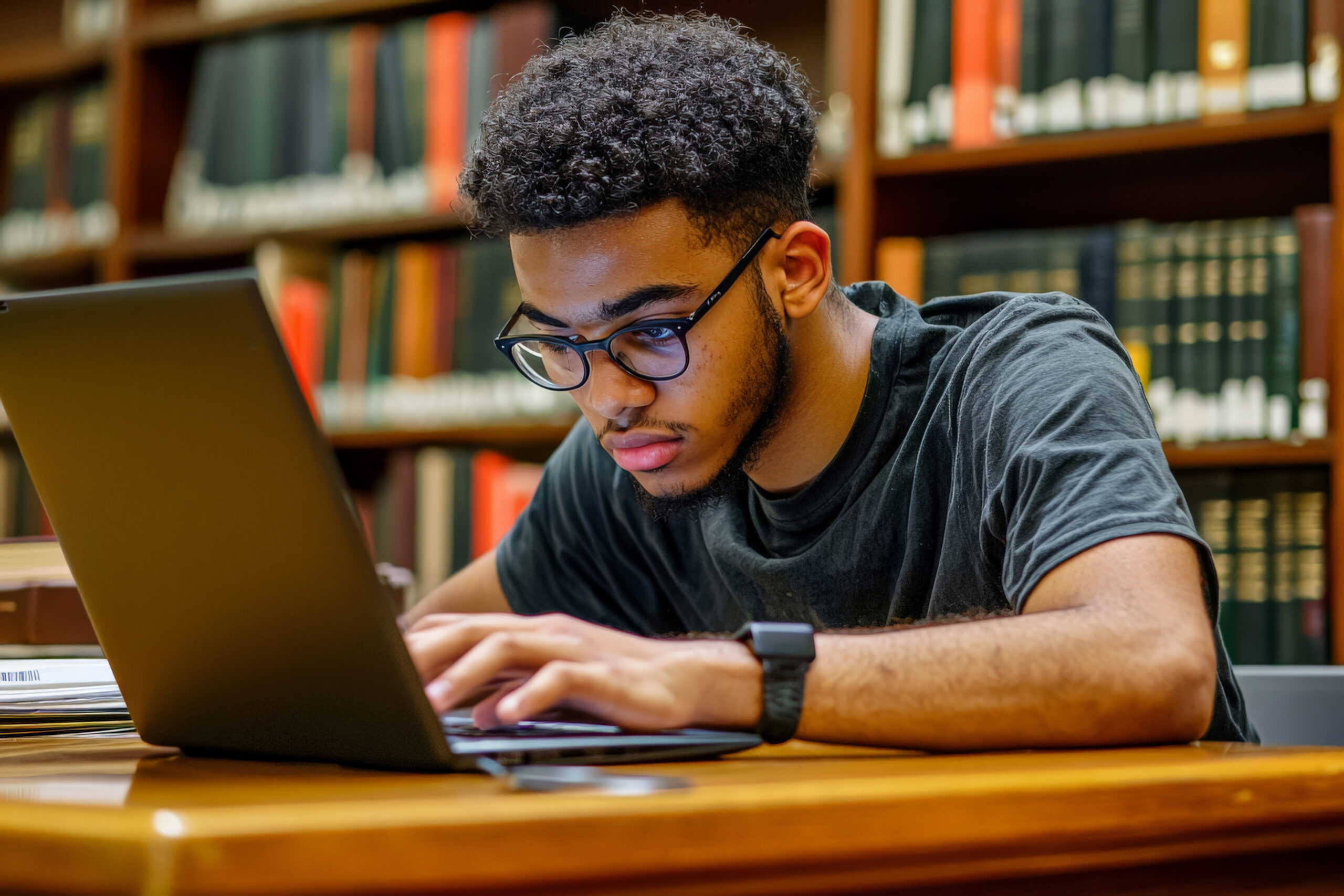Students now have additional options for producing essays, responses, and even creative assignments because of the emergence of AI technologies like ChatGPT. Although there are many advantages to this technology, it also poses a significant query: How can educators determine whether a student used ChatGPT to do their work?
AI-generated content is becoming harder to identify as it gets more complex. It presents a problem for educators. While upholding academic rigor, they hope to foster creativity and critical thinking. What resources and techniques do educators use to identify AI engagement, then? We’ll look at the methods educators employ to identify AI-generated content in this blog. There are several methods for determining if an essay was written by a student or by an algorithm, ranging from AI recognition software to human intuition based on writing style.
How Teachers Can Detect AI-Written Work
To determine when something feels wrong, most instructors use a combination of experience, pattern identification, and perhaps a little detective work. Let’s examine their two main methods.
Analyzing Writing Style and Student Voice
A student’s abrupt shift in voice is one of the first things professors notice. For instance, it raises concerns if Jamie often writes clear, basic words but then submits an essay full of intricate terminology and well-executed transitions.
Teachers sometimes examine changes in language, grammar, and tone by comparing recent work to earlier ones. It may seem suspicious if a student who had trouble with basic structure is now turning in an essay that appears to be a PhD thesis. Additionally, they will determine whether the issue is covered at a level appropriate for the student’s known aptitudes; if it reads more like a research paper than a personal perspective, this may indicate AI assistance.
Using Human Intuition and Experience
It just doesn’t sound human at times. Awkward terminology, excessively formal language, or the use of the same transitions such as “In conclusion” or “Furthermore” in each paragraph can all be detected by teachers.
Essays that lack sympathetic viewpoints, emotional depth, or personal anecdotes may come across as Wikipedia entries rather than authentic student work. Imagine a music instructor identifying a note that is just a little bit off-key; they may not immediately understand why it is incorrect, but they are aware that it doesn’t fit. Even without sophisticated technologies, educators may identify AI-generated work thanks to the same intuition.
Tools and Technologies for AI Detection
Here is a brief overview of the various types of plagiarism detectors now in use in schools, ranging from conventional ones to sophisticated AI-specific ones.
Plagiarism Detection Tools
Turnitin has been a popular tool for detecting plagiarism for a long time, but it now incorporates AI detection capabilities. To help them make better decisions, teachers can view both originality scores and an AI-generated probability.
Professors who wish to guarantee academic integrity from all sides will find Copyleaks helpful as it also checks for plagiarism and artificial intelligence-generated content.
Another popular platform in education is Unicheck. It now helps teachers identify questionable passages that may have been created rather than written and aids AI identification.
AI-Specific Detection Tools
Write a concise intro for the h2 and write content for the following h3 and cover the aspects given in it in a brief manner. Keep the content simple easy to understand and personalize with real life scenario to make it relatable where needed.
GPTZero: Certain technologies are made expressly to identify writing produced by AI. For example, GPTZero detects content that appears to be machine-generated by searching for patterns typical of ChatGPT-style writing.
BrandWell: It is excellent for comparing projects to a student’s typical voice because it delves deeply into writing style and tone consistency.
OpenAI AI Classifier: A simple method for determining whether text is artificial intelligence (AI) generated is OpenAI’s AI Classifier, which is still in development. It’s a beginning point, but it’s not infallible.
Originality.AI: Scalable Content A free application called AI Detector provides fast checks to determine whether a paragraph may have been generated by a chatbot.
Crossplag: It offers dual services like Copyleaks—combining plagiarism and AI checks in one go.
Additional Tools with AI Capabilities
Writing helpers from the mainstream are also joining the fray. Along with its standard grammar and clarity tools, Grammarly (Premium) now offers a limited set of AI detection capabilities. Although it isn’t a specialized AI checker, it can nonetheless warn users about questionable writing styles or strange tone changes, which could be useful for educators in an emergency.
These resources, which help teachers stay up to date with the rapidly evolving field of AI-assisted writing, are starting to appear in current classrooms.
How AI Detectors Work
- Pattern recognition and machine learning
Machine learning models trained on substantial samples of both AI-generated and human-written text are the foundation of AI detectors. In AI writing, they search for common traits such as repetitious language, predictable structure, and excessively smooth syntax. An essay may raise concerns if, for instance, it reads like a Wikipedia entry devoid of any original thought.
- Statistical inconsistencies in text
These technologies also identify anomalies in statistics. Compared to normal student writing, AI frequently employs different word combinations, sentence lengths, and transitional phrases. Therefore, even if your essay appears unique, the organization of the ideas may still reveal it.
- Challenges with false positives and evasion tactics
AI detectors aren’t flawless, though. A student’s extremely well-written essay may occasionally be reported as artificial intelligence (AI) (a false positive), particularly if it contains formal or sophisticated terminology.
Conversely, astute pupils may attempt evasive strategies such as rewording artificial intelligence-generated information to sound more human. Teachers frequently rely on both technology and their intuition because of this ongoing back and forth, which maintains AI detection as a dynamic process.
Important Considerations for Educators
Here’s what teachers should keep in mind while navigating this evolving space.
Limitations of Detection Tools
Not all AI detectors are flawless. They occasionally ignore content produced by AI (false negatives) or flag real student work (false positives). Due to the rapid evolution of AI technology, detection tools frequently fall behind. Simply because a well-meaning kid utilizes sophisticated vocabulary or writes well, they may be falsely blamed. Teachers should therefore interpret these findings as hints rather than conclusions.
Contextual and Ethical Judgement
AI is not always used dishonestly. Without going against moral principles, students can use ChatGPT to brainstorm or improve their grammar. It is the responsibility of educators to take context and intent into account.
A student who submits an essay that was entirely composed by a bot is not the same as one who uses AI to explain a subject. When assessing work from high-achieving students or non-native English speakers, whose writing may appear “too perfect” or “too different,” educators should be especially aware of inadvertent prejudice. It’s crucial to strike a balance between academic standards, justice, and trust.
Best Practices for Using Detection Tools
Although AI detection techniques can be useful, making the most of them requires more than merely passing an essay through a scanner. These techniques have a much greater impact when combined with a culture of academic integrity and a deeper comprehension of student habits. Here’s how educators can take full advantage of them.
- Combine tools with student familiarity and writing samples
Teachers can identify changes in tone, language, or structure by comparing questionable work with prior assignments rather than depending just on software. A red flag might be raised, for instance, if a student who usually writes in straightforward, simple lines suddenly turns in a well polished essay with intricate ideas. Building a trustworthy reference point is facilitated by having a few writing samples from each student.
- Educate students on academic integrity and AI ethics
A lot of students don’t know where the ethical boundaries of AI lie. They can make better decisions if there are open debates about what is and is not acceptable, such as employing AI for brainstorming as opposed to writing lengthy dissertations. Early development of this awareness prevents misuse later. - Use detection tools as part of a broader integrity strategy
AI detectors ought to help supplement human judgment, not take its place. Honor codes, classroom discussions, explicit policies, and encouraging environments that promote original work are all components of a comprehensive academic integrity plan. When technology and trust are combined, the emphasis remains on learning rather than catching.
Conclusion
In the end, teachers are able to identify AI-generated work, but doing so successfully requires a blend of context, intuition, and tools. Detection is more than simply passing essays through a scanner; it’s also about getting to know your students, identifying changes in their writing, and cultivating an environment that prioritizes genuineness over expediency.
Although technology is a valuable tool for promoting academic integrity, human judgment cannot be replaced by it. Because of false positives, changing AI models, and the subtleties of student expression, instructors must take a careful, case-by-case approach. The ultimate objective is to lead pupils toward authentic learning, critical thinking, and self-confidence rather than to catch them.
Additionally, K Altman Law is here to support justice and clarity if you ever have to deal with charges of academic dishonesty or complicated school regulations. We assist you in moving forward with confidence because we have a thorough understanding of university policies and student rights.





